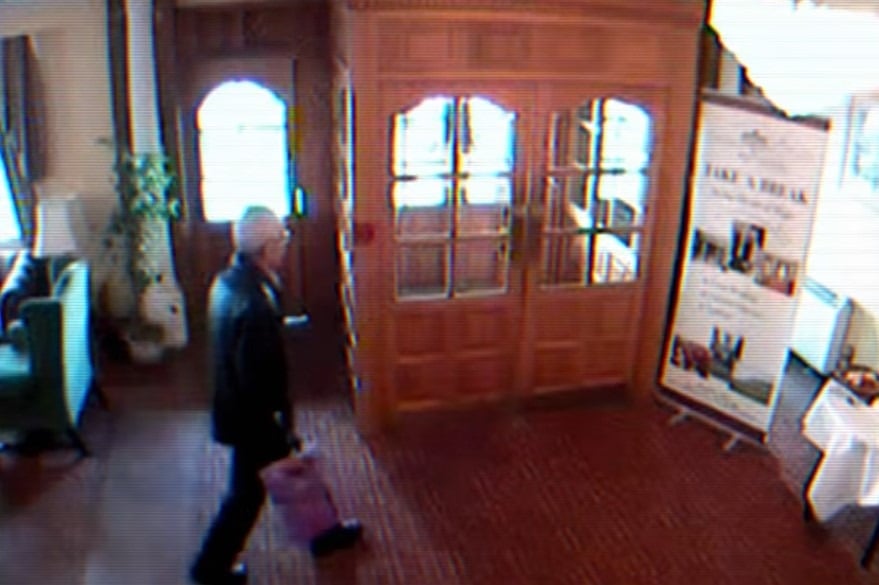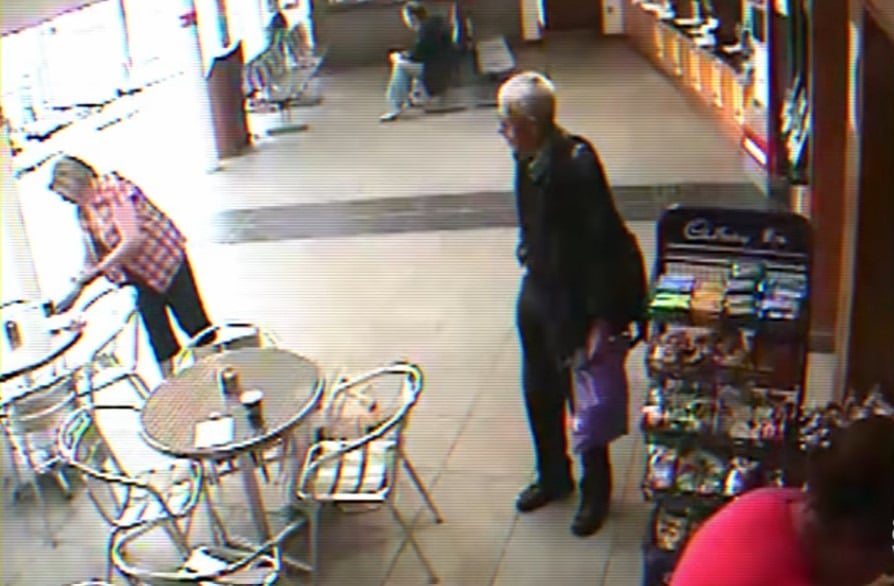Previously: The I-17 Mystery Christmas Tree.
[CW: Suicide.]
In one sense, the story ended with the body on the beach.
But in another, it began.
Here is the point at which the life of Peter Bergmann came to a close, which is also the point at which the mystery of Peter Bergmann was born:

On June 16, 2009, Arthur Kinsella accompanied his son, Brian, to Rosses Point Beach in County Sligo, Ireland. They arrived at about 6am; the tide was out and the fog was lifting. But on the beach, near the rocks, there was something strange — something that shouldn’t have been there. Arthur Kinsella spotted it first. Initially, he thought it was a mannequin; as he got closer, though, he realized it was a person. A body.
This was Peter Bergmann — or, more accurately, the man who had been know around Sligo, the port town located in the county that shares its name, for the previous several days as “Peter Bergmann.”
It wasn’t his real name.
We still don’t know who he was, or where he was from. We don’t know who his family or loved ones were.
We don’t know how he died — not exactly.
We certainly don’t know why he died.
All we really know is that he didn’t want anyone to know.
If the details of the case — an anonymous man, a death, a beach — sound somewhat familiar to you, but the name “Peter Bergmann” itself does not, that’s likely because this particular mystery bears quite a bit of similarity to another longstanding, unsolved mystery: That of the Taman Shud case, in which the remains of an unknown man — the “Somerton man,” as he’s often termed — were discovered at Somerton Beach in Adelaide, Australia in 1948, with no clue as to who he was or how he died present on the body beyond a small scrap of paper reading “Tamam Shud.” (Newspapers erroneously reported the paper as reading “Taman Shud,” and, well, the name stuck.)
But although the Taman Shud case has gone on to achieve international infamy, Bergmann’s story — what’s known of it, at least — has not. It’s been told a few times, notably in a short documentary directed by Ciaran Cassidy titled “The Last Days Of Peter Bergmann,” initially released in 2013; in a 2019 Irish Times story by Rosita Boland; and in a story by Francisco Garcia published at Vice, also in 2019. Still, though: It has largely escaped the public eye, remaining a quiet sort of mystery.
Thanks to a combination of CCTV footage and eyewitness accounts, reporters and police have been able to trace Bergmann’s movements and activity between the day he arrived in Sligo and the day he was found on the beach. The reconstruction of these four days, however, is rough, with many holes and blank spots that no amount of detective work has been able to fill.
Here is what we know happened — and what we know we don’t know.
The Last Weekend

On June 12, 2009, the man calling himself Bergmann boarded a bus in Derry headed to Sligo. Estimated at about 60 years old, he was tall and thin, with grey hair and glasses. He wore a black leather jacket, and he carried two pieces of luggage: One a two-handled hold-all, and the other a shoulder bag, possibly the type used to carry laptop computers. Like the jacket, both bags were black.
He arrived at the bus station in Sligo at about 6:28pm that evening. He did not apparently have any reservations waiting for him anywhere in town; after climbing into a taxi, he asked the driver to take him somewhere inexpensive he could stay. They struck out at the first guest house they visited, but the second, Sligo City Hotel on Quay Street, had rooms available. He booked a room for three nights, and paid in cash.
On his reservation form, he filled in the name “Peter Bergmann,” and listed his address as Ainstettersn 15, 4472, Wien — to English speakers, Vienna — Austria. He spoke with a German or Austrian accent.
He was not asked to provide any identification. Nor did he furnish any of his own accord.
He was given the keys to room 705.
Bergmann became familiar to hotel staff over the next several days, but he kept mostly to himself; he didn’t converse with other guests. He did, however, leave the hotel on occasion — and whenever he left, he would carry with him a purple plastic shopping bag full of… something. Whenever he returned, he would be carrying nothing. It’s presumed he emptied the bag at some point while he was out, then folded it up and put it away in a pocket once it was no longer in use. Then he would repeat the process the next time he left.
He did this a total of 13 times during his weekend at the Sligo City Hotel, according to the Irish Times. However, no CCTV footage has ever been found showing Bergmann disposing of the contents of the bag. None of the items he may have disposed of were ever located or identified, either.
He has also been placed around town at various times over the course of the weekend, both by eye witnesses and via footage captured on CCTV. On Saturday, June 13, for example, he went to the post office at 10:49am and bought stamps — eight of them, worth 82 cents’ worth of postage each — and airmail stickers. And on Sunday, June 14, he entered a taxi and asked the driver where he could find a quiet beach; the driver suggested Rosses Point, and then drove him there at Bergmann’s request, stopping only briefly before returning to Sligo.
On Monday, June 15, Bergmann asked the hotel in the morning for a late check out, which he was granted. He then left with the purple bag again. When left the hotel for the final time later that day — he checked out at around 1pm — he carried with him the purple bag, the black laptop-style bag, and the hold-all.
Although he had previously taken a taxi from the bus station to the hotel, it’s believed that, making the return trip, he walked. He also appears to have disposed of the black hold-all at some point between the hotel and the bus station; no CCTV footage shows the disposal in action, but by the time he arrived at the station, the hold-all was nowhere to be found.
While at the station, he stopped at the café for a cappuccino and a sandwich. He also, while seated at a table with his food, seemed to read, or perhaps write, notes on some paper he pulled from his pockets; soon, though, he tore the paper up and disposed of the scraps in a garbage bin. The paper was never recovered.
He boarded a bus, purchasing a one-way ticket, at about 2:40pm. When the bus reached Rosses Point, he debarked.
He paced the beach for a while — hours, apparently — observed by passersby at 4pm, 5pm, 9:10pm, 9:30pm, 10:30pm, 11pm, 11:10pm, and 11:50pm. 10 minutes before midnight, according to those who noticed him then, Bergmann was still pacing the beach, carrying a plastic bag, as the tide began to swallow the shore.
The next time he was seen, it was when Arthur Kinsella found him the next morning.
What Was Left Behind

Here is what the investigation of the death of the man calling himself Peter Bergmann — carried out by Ireland’s police service, the Gardaí — revealed:
When Bergmann died, he was wearing a navy blue T-shirt, a Speedo-style swimsuit, underwear layered atop the swimsuit, and a wristwatch. He left the rest of his clothing on the shore, folded and stacked in a neat little pile. None of the items had any labels — they had all been removed.
He had a few things in his pockets — some money, tissues, aspirin, adhesive bandages, a bar of hotel soap that, later, was determined to have been of a brand neither from Ireland, nor carried by any hotels in Ireland — but, notably, no identification. Also missing were his glasses, the stamps he had purchased at the post office on Saturday, the shirt he was wearing when he checked out of the hotel on Monday, the black laptop bag, and the purple shopping bag.
The post-mortem examination revealed something significant: Bergmann was ill — very ill. He was in the late stages of prostate cancer; Clive Kilgallen, who conducted the examination, estimated that the cancer was so advanced that Bergmann had left only “weeks at most,” according to the Irish Times. Additionally, bone tumors abounded, and Bergmann had only kidney — the other was missing, presumably having been removed at some point in the past. There was also evidence that he had suffered and survived a heart attack some time earlier — perhaps even several.
And yet, curiously, no medication was detected in his system — not even over-the-counter pain killers, despite the aspirin found in his pockets. Given the fact that he likely would have been in a great deal of persistent pain due to his various ailments, this detail seemed noteworthy.
The cause of death was not listed as drowning; according to the post-mortem, there were, in fact, no signs of “classical salt water drowning” at all. Bergmann had died from acute cardiac arrest.
When attempts were made to identify the man, it was discovered that “Peter Bergmann” was a false name.
It was also found that the address the man had listed on his hotel registration form did not exist.
Here is what we do not know, still:
- The man’s true name;
- Where he was from;
- Why he masked his identity and place of origin;
- How and where he entered Ireland;
- Why he went to Sligo;
- Why he chose Sligo as his destination;
- What he did with the belongings he seemingly disposed of during his time in the town;
- What those belongings were in the first place;
- Why he disposed of them;
- Whether he intended to die by drowning;
- Whether he intended simply to disappear;
- What brought on the heart attack that killed him;
- Where the items he was known to have left the hotel with ended up before his death;
- Who his family, friends, or loved ones might be;
- Whether he wrote and mailed letters or postcards to them in his final days;
- And why none of them have come forward to identify him.
The Final Mystery

It isn’t difficult to dream up a narrative that fits the scraps of information we have:
A man — ill, dying — decides that, rather than wait for the inevitable, he will take charge of the situation himself. He travels somewhere, away from his home, and spends a few days getting his affairs in order. He disposes of belongings he no longer needs and does not wish to leave behind. Perhaps he writes some letters or postcards, and mails them. Perhaps in those letters or postcards, he tells his loved ones what he is planning — and perhaps he also tells them not to look for him, not to identify him, to let him vanish, to let him go. And then, on the last day, when he certain he is finally alone, he walks into the sea.
“In effect, he was writing the last days of his life,” said John O’Reilly, who was Sligo-Leitrim’s detective inspector at the time of “Peter Bergman’s” death, in the documentary “The Last Days Of Peter Bergmann.” O’Reilly continued with a key point: “And it was all done on his own terms, according to his own plan.”
Of course, there’s no way to tell how accurate this proposed narrative might be — if at all. What we don’t know about “Peter Bergmann” and the way he died remains as such — that is, unknown — and although the case remains open, and officials are fairly convinced his actions were deliberate and intentional, it becomes less and less likely with each passing year that any of the unanswered questions we still have will ever be satisfactorily solved.
But maybe that’s the point.
The man calling himself Peter Bergmann was buried in Sligo’s town cemetery on Sept. 18, 2009. The grave is unmarked; it’s owned by Ireland’s public health services board, and is intended to house the remains of up to three people who remain unclaimed after their deaths. The grave currently holds two people — Bergmann and one other person who pre-deceased him. Six people attended the burial, among them the undertaker and the grave digger.
Most people who have been involved in the investigation think he came to Sligo for a reason, even if that reason was known only to himself.
And it’s there, in Sligo, that he remains.
If you or someone you know is struggling, please reach out to the National Suicide Prevention Lifeline ‘1-800-273-TALK (8255)’ or text TALK to 741741 at the Crisis Text Line in the United States, or click here for international resources.
***
Follow The Ghost In My Machine on Twitter @GhostMachine13 and on Facebook @TheGhostInMyMachine. And don’t forget to check out Dangerous Games To Play In The Dark, available now from Chronicle Books!
[Photos via Aeon Video/YouTube (2); infodad, dkavanaugh80/Flickr, available under a CC BY-SA 2.0 Creative Commons license.]
Leave a Reply